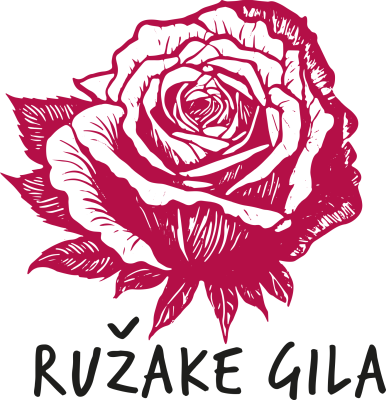Slow Songs (loke gila)
(GERMAN ONLY) Ruža Nikolić-Lakatos emphasizes how important the old, slow songs are in her life. "They are actually my life," she says in this excerpt.
(ROMANES) Ruža Nikolić-Lakatos speaks with Mozes F. Heinschink about the old songs.
"I like these songs that reflect what really happened, you know, how the Rom used to talk and sing among themselves, I like these songs. Even now, Mozes, these are my favourite songs. When I sit down, you know, I used to sit down alone and sing all sorts of things to myself, but now I've forgotten that, but even that - I don't enjoy it. No joy. If we hadn't sat together, my God, the people, even another time, Mozes, you remember when there were a lot of us together, suddenly we started and something beautiful came out. You could only hear beautiful songs..."
The slow songs or table songs of the Lovara, mesaljake gila, are characterised by impressive poetry. They refer to the essential aspects of the singers' lives, thus expressing experiences and feelings and telling stories to the listeners, typically the family. The songs function as the cultural and historical memory of the Lovara and provide information about the everyday life of the ancestors, the group's own values and rules of the moral and honour code and the fates of individuals. The texts are full of poetic stylistic devices and idioms but also allow for spontaneously inserted and altered verses. (See: The Lovari Songs) They therefore also have an improvisational character. The verses of the slow songs each consist of four lines of six to eight syllables, to which characteristic filler syllables such as jaj, joj, aj, de are commonly added.
Another typical feature of loke gila is the emphasis on the actual events of the song content. This is also evident in the field research recordings with the singer Ruža Nikolić-Lakatos, who often affirms the 'true events' of the songs.
(GERMAN ONLY) Ruža Nikolić-Lakatos talks about the slow songs and her love for them. She emphasises the true events, which the songs tell of and explains the process of passing them down through generations.
(ROMANES) Ruža Nikolić-Lakatos speaks with Mozes F. Heinschink about the transmission of old songs.
MH: "And who did you learn your beautiful songs from?" RN: "From the old people. I heard a lot from my grandmother, from my uncle, and they in turn heard the songs from their elders. And these Romani songs, these table songs, are the most beautiful. Because they are about life, people sing about what has happened here, among the Roma. What has happened, [e.g.] someone has run away, or left someone, or a woman has cheated on her husband or a man on his wife. Well, and people sing about all that in these songs."
The slow songs are traditionally told from a male first-person perspective. This can be seen in both grammatical and content-related characteristics. When Ruža Nikolić-Lakatos sings, she adopts the narrative perspective of the respective song, i.e., the 'male point of view'. However, it is not the gender of the narrator that is of primary importance, but rather the event itself and the feelings associated with it.
Manuela Nikolić comments on the narrative perspective of the loke gila and its meaning.
Musical Structure
The musical structure of the slow songs is characterised by framework tones that always remain the same. The intermediate notes can vary. Improvisation is an essential element of the slow songs of the Lovara. The significance of the line-ending tones can be seen on the one hand from their length in the songs, which are all sung free-rhythmically (parlando-rubato), and on the other hand from the strong vibrato with which the singer performs them.
A particularly striking characteristic of the slow Lovara songs is the handling of the final note. The final note, almost always the melodic 1st, is introduced either by the melodic 7th or the 2nd. This is done in such a way that the preceding note is sustained for a long time and sung in a decrescendo, followed by a pause, after which the final note sounds very softly, often breathy. In the performance, one has the impression that it does not belong to the song at all if one is not familiar with this way of singing. The pause before the final note is a meaningful element, a characteristic of these songs and an essential part of the performance.
Sources and further information:
- Hemetek, Ursula. Mosaik der Klänge. Musik der ethnischen und religiösen Minderheiten in Österreich. Wien: Böhlau, 2001.
- Hemetek, Ursula: Comparison of Žo-tar mange žo-tar and Tu gelan tar a lumasa, a slow song and a new song; In: Amare gila - Unsere Lieder – Our Songs. Ruža Nikolić-Lakatos u.a., eine Dokumentation der Lovaraliedkultur in Österreich. CD mit Begleitheft. In der Reihe: Tondokumente zur Volksmusik in Österreich Vol.4, März 1994, Neuauflage 1998. PDF
Zitierempfehlung anzeigen
Bitte zitieren Sie diese Seite wie folgt:
Music and Minorities Research Center, "Slow songs (loke gila)", Ružake gila, zuletzt besucht am Loading date..., doi.org/10.21939/xrd0-kx86

